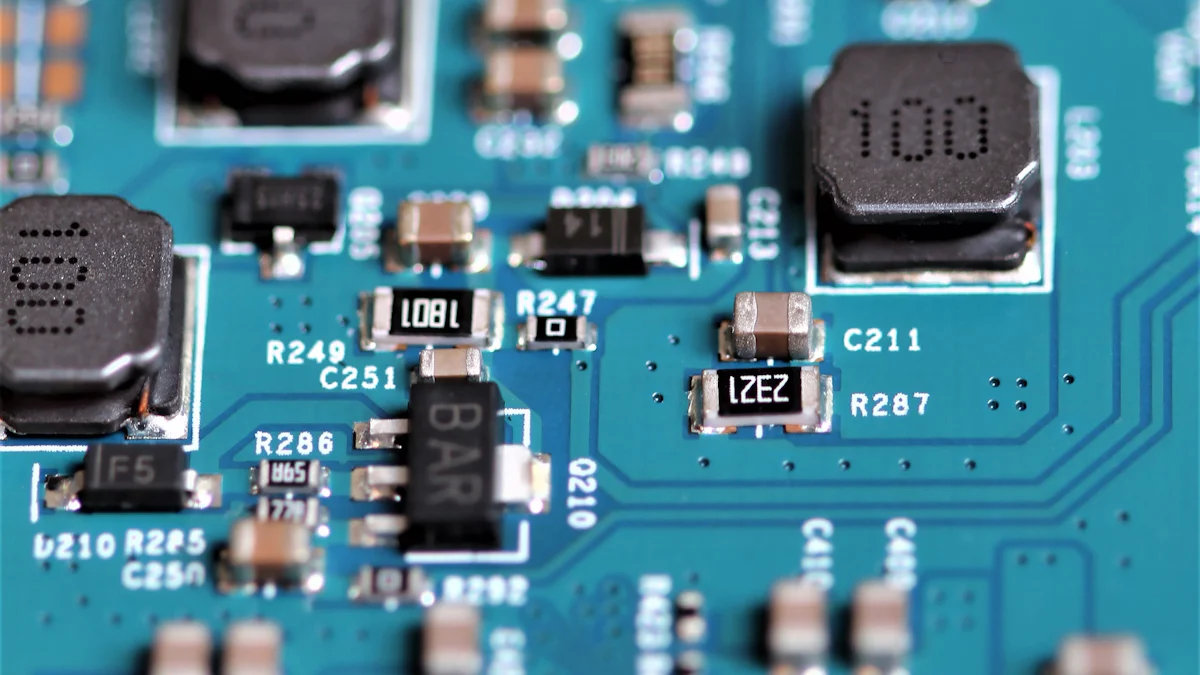The Story of Samsung: From Humble Beginnings to Global Giant
Early Years and Foundation
Founding of Samsung
Establishment in 1938
Lee Byung-Chull established the Samsung Company in 1938. The company began as a small trading enterprise in Daegu, Korea. The founder named the company "Samsung," which means "three stars" in Korean. This name symbolized his vision for the company to shine brightly like stars in the sky.
Initial business ventures
Samsung Company initially focused on trading dried fish, locally-grown groceries, and noodles. The company exported these products from Korea to Beijing, China. Over time, the company expanded its operations into other areas. The early business ventures laid the foundation for future growth and diversification.
Post-War Expansion
Diversification into various industries
After the Korean War, Samsung Company diversified into several industries. The company ventured into food processing, textiles, insurance, securities, and retail. This diversification helped Samsung Company stabilize its revenue streams and reduce dependency on any single industry. The company's focus on industrialization significantly affected South Korea's economic development.
Key partnerships and acquisitions
Samsung Company formed key partnerships and made strategic acquisitions to strengthen its market position. The company acquired insurance companies, an oil refinery, a nylon company, and a department store. These acquisitions allowed Samsung Company to expand its portfolio and enter new markets. The company's ability to adapt and grow through strategic decisions marked the beginning of its journey toward becoming a global giant.
Technological Advancements and Innovations
Entry into Electronics
Launch of first electronic products
Samsung entered the electronics industry in 1969. The company launched its first product, a black-and-white television set. This marked the beginning of Samsung's journey in consumer electronics. The early success of these televisions stemmed from the company's connections with Tongyang Broadcasting Company. This private radio and television company boosted the sales of Samsung's television sets.
Development of semiconductor technology
Samsung began investing heavily in semiconductor technology in the late 1970s. The company established two research and development centers during this period. These centers became the foundation for Samsung's future technological advancements. Samsung soon became a world leader in chip production. The company's commitment to innovation in semiconductors played a crucial role in its growth.
Rise in the Global Market
Introduction of consumer electronics
Samsung expanded its product range in the 1980s. The company ventured into various consumer electronics, including home appliances and digital TVs. Samsung aimed to become the world's largest consumer electronics manufacturer. The company's diverse product portfolio includes clothing, medical equipment, and telecommunications.
Expansion into international markets
Samsung's global expansion began in earnest during the 1980s. The company sought to establish a strong presence in international markets. Samsung's strategic investments in design and manufacturing helped achieve this goal. The company's focus on quality and innovation resonated with consumers worldwide. Samsung's products gained recognition for their reliability and advanced features.
Major Milestones and Achievements
Breakthrough Products
Release of the first mobile phone
Samsung entered the mobile phone market with the SPH-1300 in 2001. This early touch-screen prototype marked Samsung's initial steps into mobile technology. The company continued to innovate and released the first speech-recognition phone in 2005. These early products demonstrated Samsung's commitment to pushing technological boundaries.
Introduction of the Galaxy series
In 2008, Samsung launched the Galaxy line of smartphones. This series revolutionized the smartphone industry. The i9000 Galaxy S, released in 2010, featured a 4-inch Super AMOLED screen, Gorilla Glass protection, and a 1GHz Hummingbird processor. These features set new standards for smartphones. By 2012, Samsung had become the world's largest smartphone manufacturer. The Galaxy series continues to be a cornerstone of Samsung's product lineup.
Business Strategies
Investment in research and development
Samsung's success can be attributed to its significant investment in research and development. The company established two research centers in the late 1970s. These centers focused on semiconductor technology and consumer electronics. Samsung's commitment to innovation has led to numerous technological advancements. The company's R&D efforts have played a crucial role in maintaining its competitive edge.
Strategic mergers and acquisitions
Samsung has strategically acquired companies to expand its market presence. The company acquired insurance companies, an oil refinery, a nylon company, and a department store. These acquisitions allowed Samsung to diversify its portfolio and enter new markets. Strategic partnerships have also strengthened Samsung's position in various industries. The company's ability to adapt and grow through these strategies has been key to its success.
Challenges and Resilience
Economic Crises
Impact of the Asian financial crisis
The 1997 Asian financial crisis severely impacted many companies in South Korea. However, Samsung managed to survive relatively unharmed. The only major exception was Samsung Motor, which faced significant financial difficulties. The auto subsidiary eventually went bankrupt and required a bailout from Renault. This period tested Samsung's resilience and ability to navigate economic turmoil.
Recovery strategies
Samsung implemented several recovery strategies to stabilize its operations during the financial crisis. The company focused on restructuring and streamlining its business units. Samsung divested non-core assets and reduced operational costs. The company also prioritized investments in high-growth areas such as electronics and semiconductors. These strategic decisions enabled Samsung to recover quickly and emerge stronger from the crisis.
Legal and Ethical Issues
Patent disputes
Samsung has faced numerous patent disputes over the years. One of the most notable cases involved a legal battle with Apple. The dispute centered around smartphone design and technology patents. The litigation spanned several years and resulted in significant financial settlements. These legal challenges highlighted the competitive nature of the technology industry and the importance of intellectual property protection.
Corporate governance reforms
Samsung has also encountered issues related to corporate governance. The company has faced scrutiny over its management practices and transparency. In response, Samsung implemented several reforms to improve corporate governance. These measures included enhancing board oversight and increasing accountability. The company aimed to build trust with stakeholders and ensure sustainable growth.
Current Status and Future Prospects
Market Position
Image Source: PexelsLeading products and services
Samsung continues to dominate the global electronics market with a diverse range of products. The Galaxy S family remains a consumer favorite, contributing significantly to Samsung's revenue. Samsung also excels in producing home appliances, semiconductors, and display panels. The company's innovative approach ensures its products stay ahead of industry trends.
Global market share
Samsung holds a substantial share of the global smartphone market. In Q2 2021, Samsung shipped 58 million units, capturing over one-fifth of the market. By 2023, Samsung accounted for 19.4 percent of all smartphone shipments worldwide. Samsung's market share reached 18.9 percent in Q2 2024. The company consistently ranks as a top player in the industry.
Future Innovations
Image Source: PexelsFocus on AI and IoT
Samsung invests heavily in artificial intelligence (AI) and the Internet of Things (IoT). These technologies promise to revolutionize how consumers interact with devices. Samsung aims to integrate AI into its product lineup, enhancing user experience and functionality. The company's IoT initiatives focus on creating a connected ecosystem of smart devices.
Sustainability initiatives
Samsung commits to sustainability and environmental responsibility. The company implements eco-friendly practices across its operations. Samsung focuses on reducing carbon emissions and increasing energy efficiency. The company also invests in renewable energy sources. These efforts align with global sustainability goals and enhance Samsung's corporate image.
Samsung's journey from a small trading company to a global giant showcases remarkable growth and resilience. Key factors contributing to Samsung's success include a resilient business model, efficient supply chain management, and a strong focus on brand image. Samsung's diverse product categories and quick adaptation to market changes have also played crucial roles. The company's manufacturing expertise and internal strengths have supported its competitive edge in the global market. Looking ahead, Samsung's commitment to innovation and sustainability will likely drive future growth and maintain its leadership in the technology industry.













Join the conversation